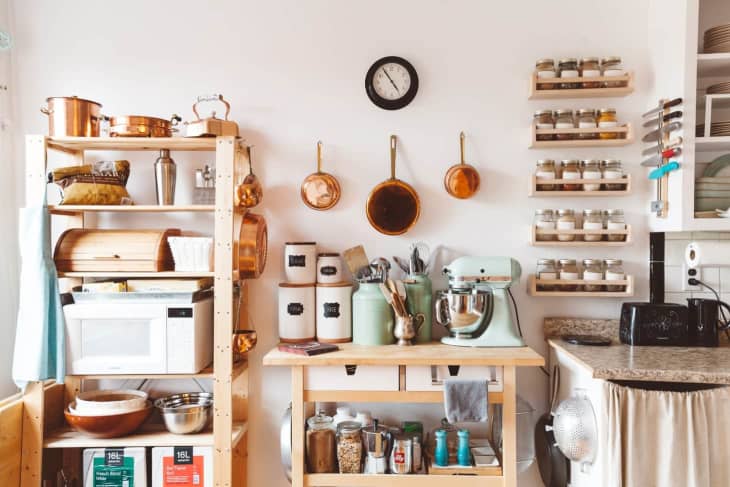5 Things a Microbiologist Would Remove from Your Kitchen, Every Time
Your kitchen is where you store, cook, and eat all your food. So, yeah, you definitely already know the importance of keeping the space as germ-free as possible. You regularly disinfect high-touch areas. You wash dirty utensils with hot, hot water. And you wipe up spills right away. But we were curious: What are the spots that put a microbiologist on high alert? We reached out to microbiologist Jason Tetro, author of “The Germ Files,” to get his list.
These are the five things he’d like to remove (or at the very least, sanitize!) in your kitchen — and his expert advice of what to use instead.
Related: 5 Cleaning Supplies This Microbiologist Always Has On Hand
1. That germ-y sponge
You probably know that sponges are notorious breeding grounds for bacteria: By some estimates, they contain more risky pathogens than a toilet seat! That’s a problem not just because it makes your sponge stinky, but also because you could unwittingly transfer bacteria onto the dishes you’re trying to clean.
Your best bet: Tetro suggests replacing your sponge every week to avoid cross-contamination. Or, you can swap your sponge out for a brush, which is much easier to successfully clean. (We love this brush from OXO, which holds dish soap right in the handle!)
2. Containers with subpar silicone gaskets
Bacteria are microscopic and can easily hide anywhere — especially along the gaskets of your favorite food storage containers. “It is very difficult to properly clean those seals,” Tetro says. “They may be good for preventing lunchtime leaks, but they also may lead to unwanted microbial contamination.”
Your best bet: Use glass storage containers that have tight seals built into the lids. These sorts of lids are easier to clean, and that will reduce the chances of hidden contamination. Also, while you can’t see bacteria with your naked eye, you can look to make sure there are no remnants of food left behind.
3. Your neglected coffee maker
For decades, the coffee maker reservoir has been identified as a source for fungi, including potentially harmful ones, such as the common mold Aspergillus, which may cause lung infections. You don’t have to get rid of your coffee maker, but if it’s been a while since you’ve given it some TLC, you should definitely take the time to give it a thorough cleaning.
Your best bet: Clean your coffee maker, for one. But Tetro actually prefers coffee gadgets like a French press or a moka pot, which are more likely to be used and then washed, thus reducing the chances for any microbial growth. “Perhaps more importantly, you can wash these in the sink, so that you can assure cleanliness over time,” he adds.
4. Your fridge’s crisper
The refrigerator crisper is meant to keep fruits and vegetables cold and fresh, but it’s so germ-y, it rivals the kitchen sponge! What’s worse, Tetro says, it may contain a variety of pathogens, such as Salmonella and Listeria.
Your best bet: Don’t worry — you don’t have to get rid of your crisper. But you should do a few things to make sure it’s a reliable storage option and not a petri dish. “Make sure all fruits and vegetables are contained in bags that help to reduce the level of moisture,” Tetro advises. Also, pull the drawers out regularly, clean them with disinfectants, and then rinse them thoroughly.
5. Wood cutting boards
In a study comparing wood, plastic, and glass cutting boards, Tetro says wood had the most lingering bacteria. Plastic had fewer counts, and glass had the least.
Your best bet: Tetro advocates for glass cutting boards (he is a microbiologist after all!), but we don’t recommend them, because they’re too harsh on knife blades. Our advice: Devise a system so that you only use certain boards (whether they’re wood or plastic) for meat and fish and others for fruits and vegetables. At the very least, this will help prevent cross-contamination. And follow our directions for cleaning plastic and wood cutting boards.
Will you be making any of these swaps? Tell us in the comments below!
